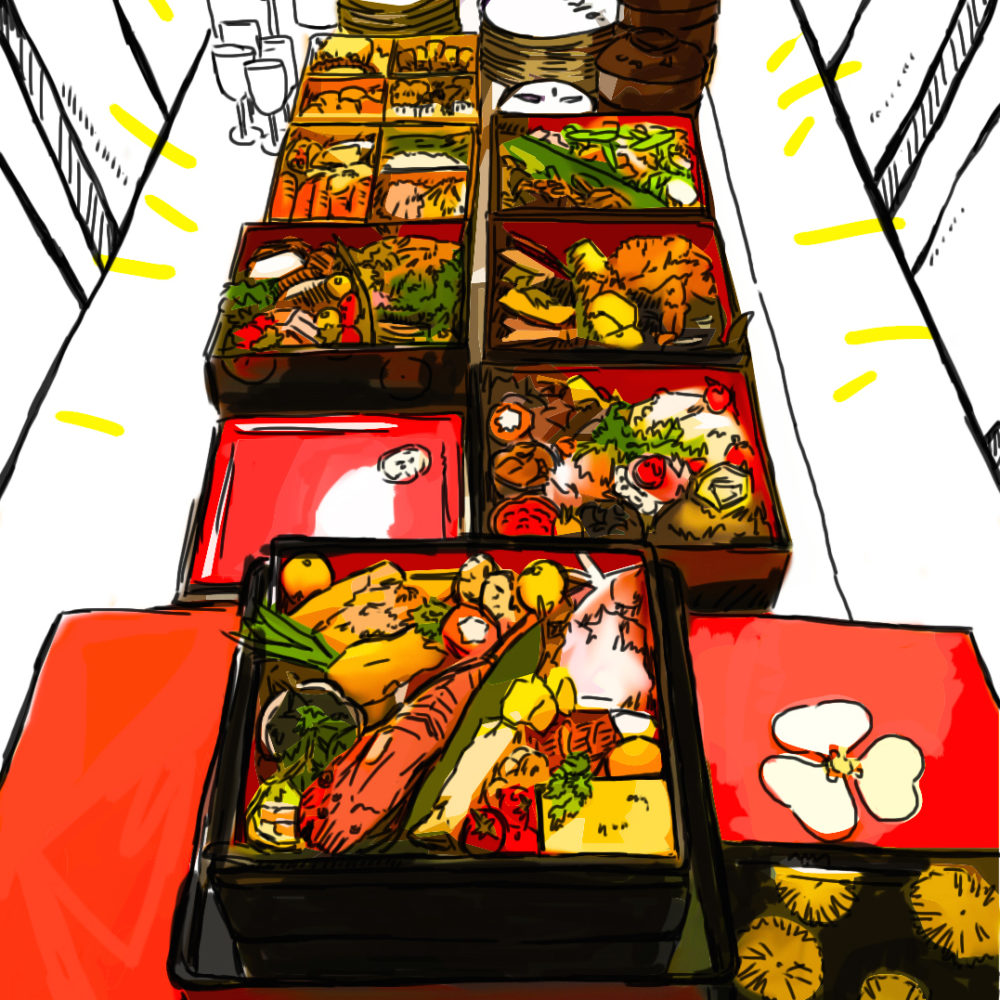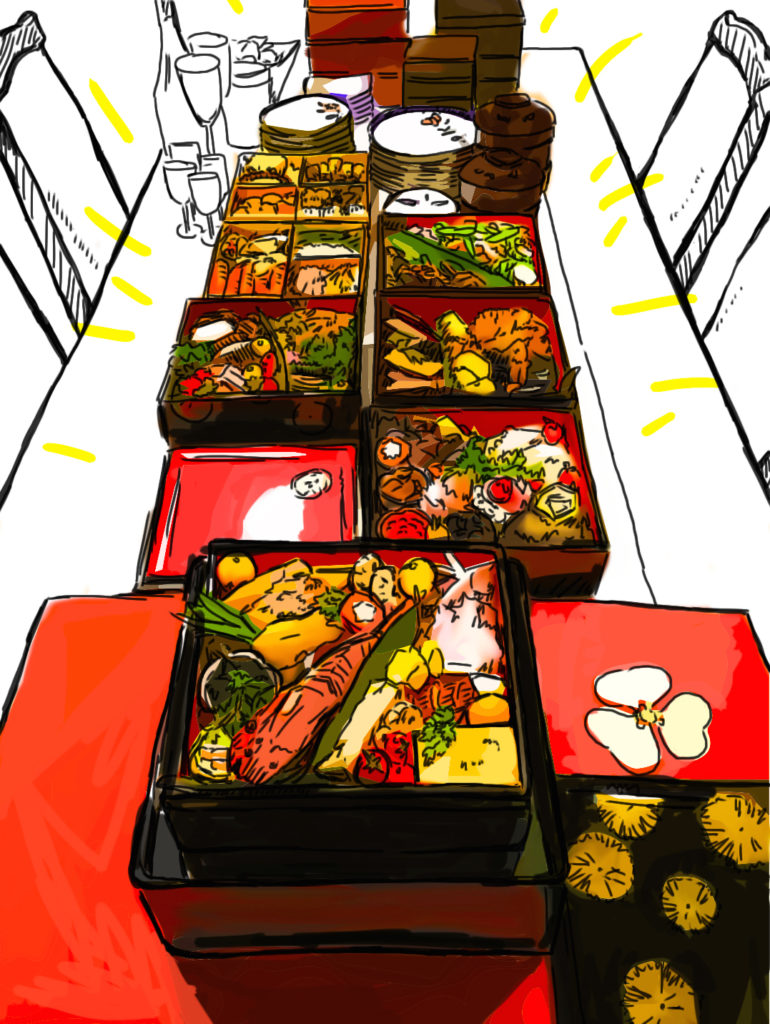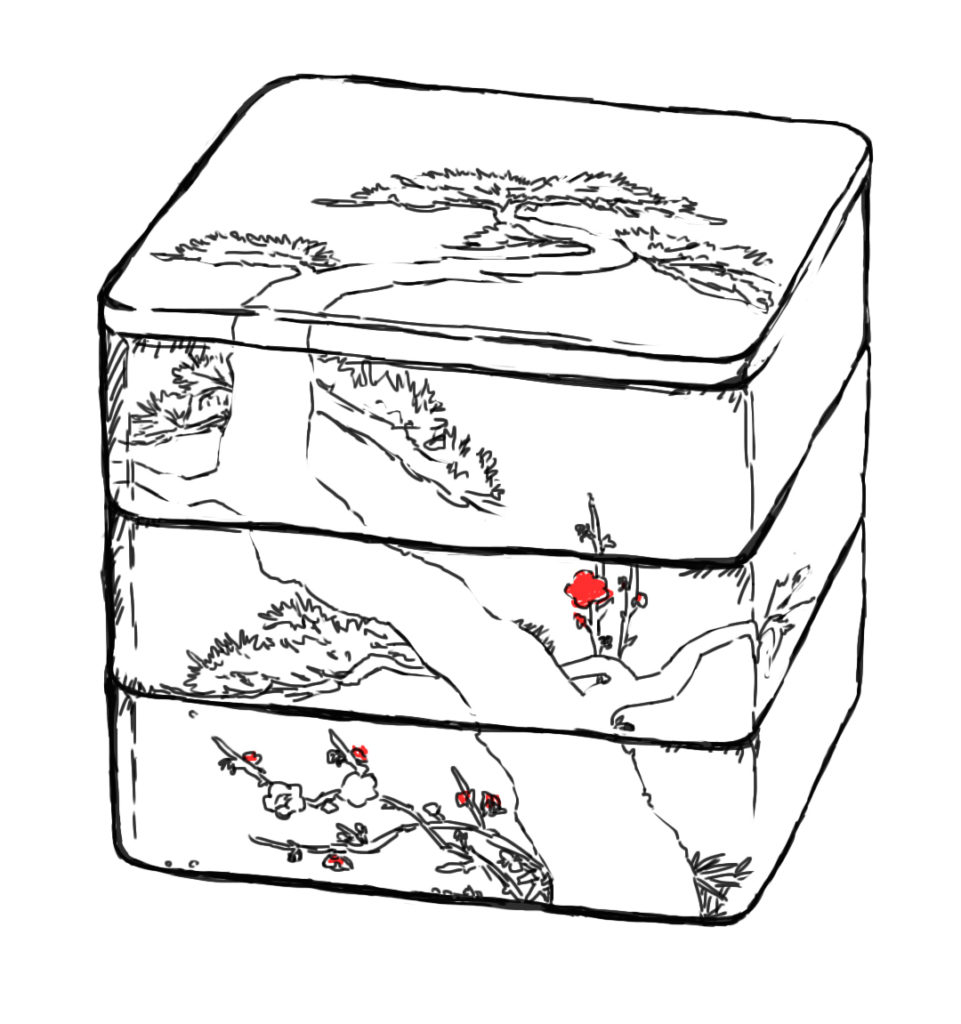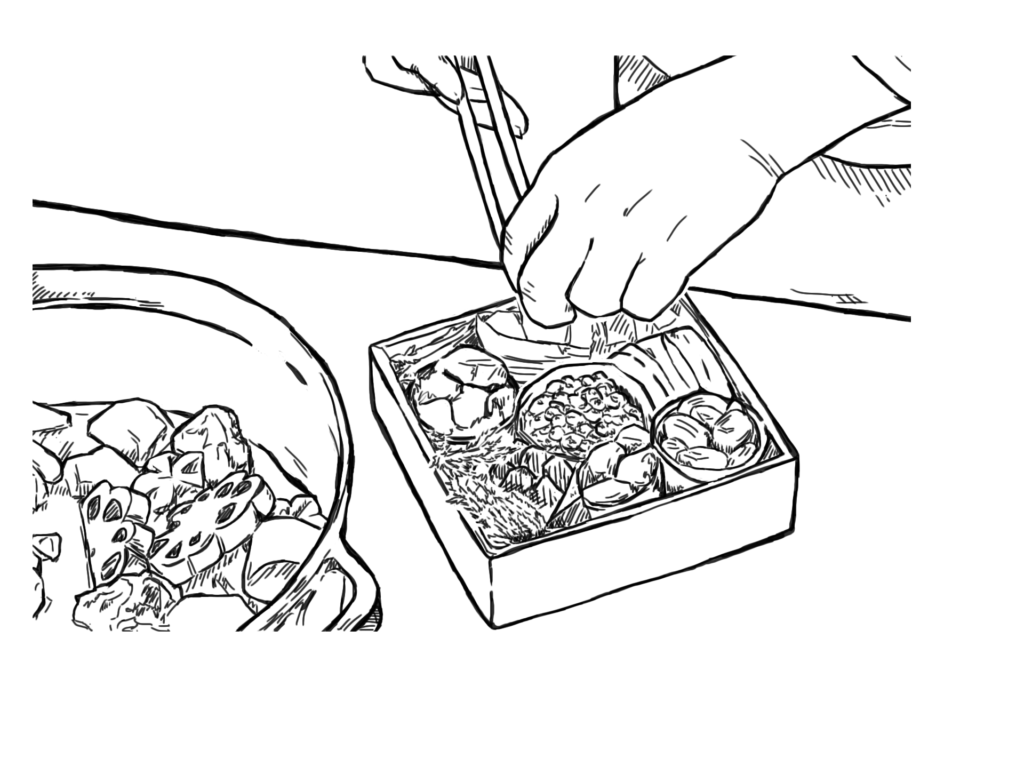
Can we start eating please?
The table was lined with boxes, filled with colorful and bright foods that are specially made just this one time of year. The bright red prawns, still glistening from their sweet sake and soy sauce marinade, were inviting me to reach for them. My eyes also scanned for the sugar-coated black soybeans and steamed shrimp dumplings, a favorite among my family and bound to be finished first. Or do I go for the caramel-colored omelettes, beautifully rolled into soft little bundles? Or how about the pink and white kamaboko, which has been carefully cut into thin half-moon shaped slices? And of course I couldn’t forget about the ozoni, an especially tempting choice when I thought about the melting mochi rice cakes which hid at the bottom of the clear kombu soup– because sometimes the simplest dishes are the best at the table.

Foods Which Bring Good Luck and Fortune
My New Year’s Day always begins with this meal, called osechi ryori in Japanese. Starting during the Heian period, 794-1185 AD, it is now tradition for osechi ryori to be consumed by families on New Year’s Day. They are served in three-tiered black lacquer jubako boxes, often decorated in red and gold embellishments, a high quality version of a bento box.

Osechi dishes are not random choices, but each dish that composes the box has special meaning which is supposed to bring good fortune and wealth for the coming new year. For example,
- Red prawns symbolize longevity, because they suggest long beards and bent waists.
- Black soybeans symbolize health because in Japanese it is read kuromame, and the food is associated with the saying “mame ni kurasu”, which means to live in good health.
- Datemaki, or sweet rolled-up omelettes, look like rolled up scrolls and so are associated with knowledge and learning.
- Kamaboko is a pink and white fish cake, and the colors are representative of Japan’s national colors and have celebratory connotations.
- Kombu seaweed is associated with the word yorokobu, which means joy.
Traditional boxes are made to optimize the health and fortune of those consuming it, so they are often filled with high-quality, special, and fresh ingredients. In this way, Japanese families often begin their year with a well-rounded plate of colorful dishes which are thought to bring wealth into their household.
The Original Japanese Meal-Prep
You might imagine that such a complex array of dishes means that the cook of the household would not be able to enjoy New Year’s Day. One only needs to host a large dinner party once to sympathize with the amount of time and energy required to entertain a crowd with food. However, this is not the case with osechi!
Because New Year’s is a time for everyone to rest and enjoy, it used to be very taboo for Japanese people to cook during the first three days of the New Year. Preparing and cooking food was thought to be a form of working, so meals would instead be prepared ahead of time. In this way New Year’s was designed so everyone–especially women, who historically would be the one doing most of the household cooking–could enjoy a well deserved rest at the beginning of the year.

Much like how people bulk-prep their meals today, osechi preparation would be done in advance and in large portions, enough to last the holidays without any additional cooking. But it would be a shame starting the new year eating the same thing over and over for three days, so osechi ryori was developed to include a diverse array of foods and flavors. From meats, to fish, to vegetables, and dessert: osechi is easily stackable and easily preserved, and so unfinished osechi gets packed away for the next day.
Time is Valuable: Maximize Spending It In Ways It Matters
Osechi ryori is not just a special meal designed to bring good luck and fortune, but in its history is ingrained an important belief that we should be spending these holidays maximizing the time we get to spend with the people who matter most. Going back centuries, osechi meal prepping was not just a matter of convenience, but served as an important reminder to take a break and enjoy the company of loved ones.
In this way osechi ryori embodies two things about food that I believe is incredibly important to our health and wellbeing:
- Nourishing– provides are bodies with the nutrients it needs to build, heal, and repair.
- Bring people together– it should be a source of communication and care, something that loved ones can gather around and socialize over.
With these two values in mind, food becomes a source of enrichment into our lives, rather than a cause of disease or addiction. Meal prepping is not just for health nuts or biohackers, but it can be a life skill for individuals looking for ways to bring wealth and quality into their life.
When I celebrate the New Year, I want it to be with me surrounded by family and friends, where everyone gets to feel present at the table. Because between school, work, and traveling, the number of times a year I get to spend sitting down with my loved ones becomes more limited, as we all have our own lives and responsibilities to attend to. But New Year’s Day, that’s where we come together, enjoying the wealth of high-quality and nourishing food.

Happy New Year!
If you enjoyed this article, have any comments, questions, or would like to know more, please email me at kokumura@kakikata.space! I read every email I get and would love to hear from you!
[…] Watercolor by Kaki Okumura […]